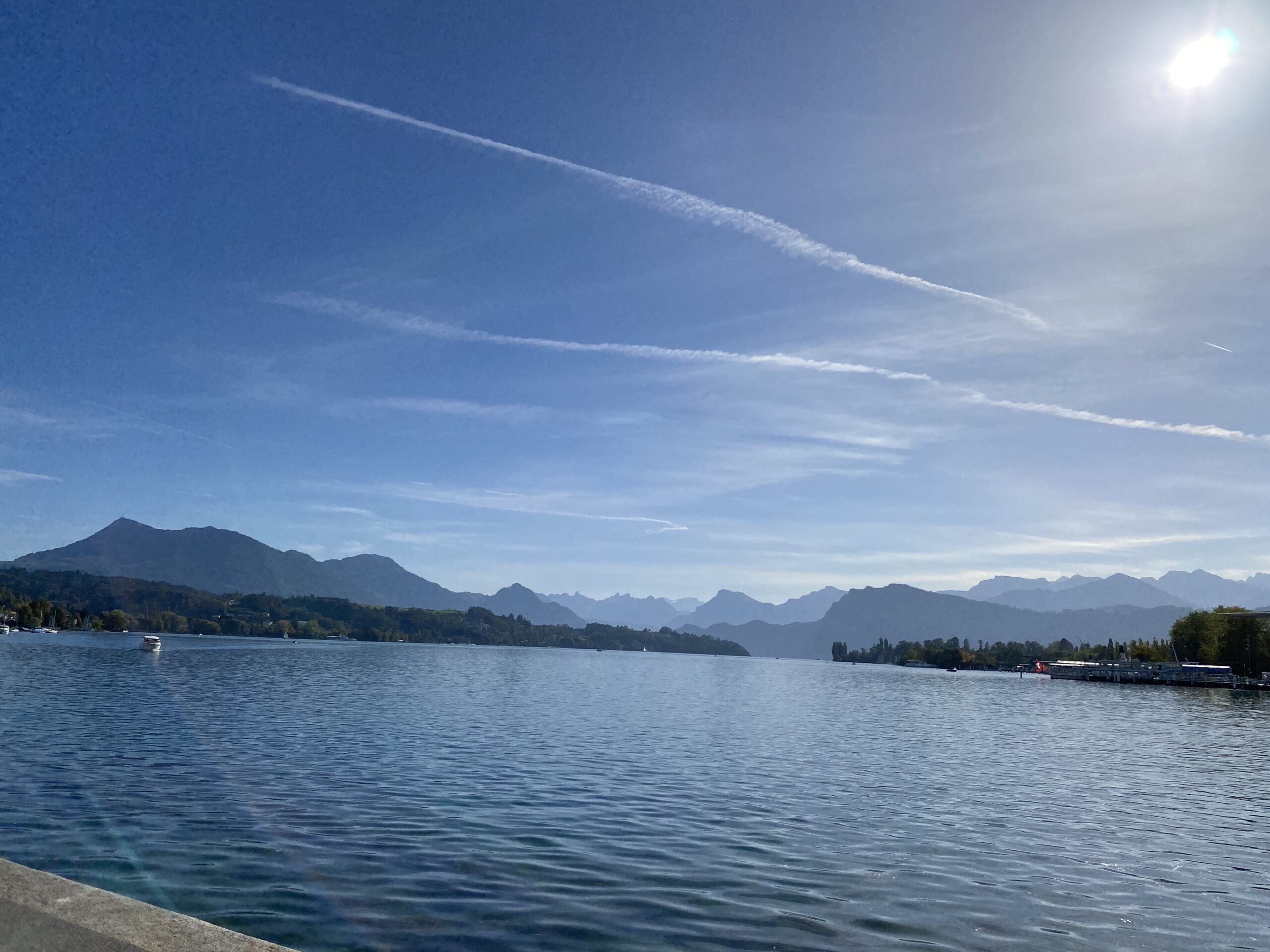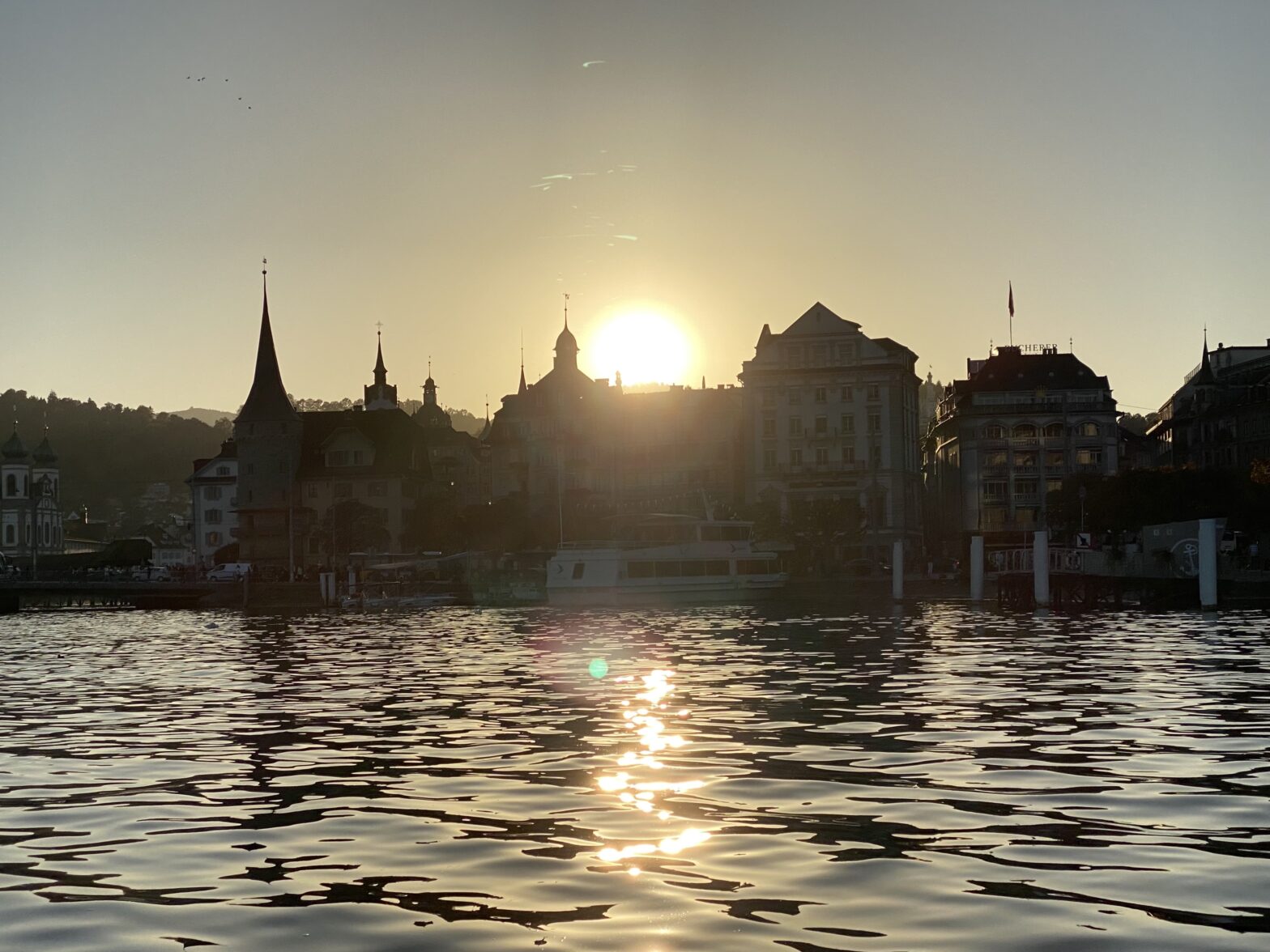Perched on a weathered stone bridge that arched gracefully over the crystalline expanse of Lake Lucerne, I found myself enveloped in a scene that seemed to have leaped from the pages of a postcard. The gentle breeze carried the faint scent of water lilies and the distant melody of church bells, harmonizing with the rhythmic lapping of the lake against the bridge’s sturdy pillars. It was here, amidst the timeless beauty of Lucerne, that I encountered a character whose presence seemed to embody the essence of the picturesque surroundings.
Standing on the stone railing of the bridge, with the iconic Kapellbrücke as his backdrop, was a man, holding a large, black camera. His well-worn leather jacket, adorned with an assortment of badges that spoke of past adventures, exuded an air of seasoned wanderlust. A determined beanie, clinging tenaciously to his unruly mane, added a touch of nonchalant charm to his demeanour as he busied himself with the glowing screen of the camera, carefully examining a captured moment from his recent escapades.
“That photo looks really good. It’s like a stock photo.”
“Thanks.”
The words hung in the air for a moment, their weight overshadowed by the flickering glow of a smartphone screen. It was a compliment, really, on a photograph well-taken. But it was also a subtle acknowledgment of a paradox that has become all too familiar in the age of ubiquitous photography: in the infinite album of existence, every capture echoes like a chorus of déjà vu, as if each click of the shutter is but a recurring verse in the symphony of visual echoes.
Close your eyes and imagine Googling “sunset”.
Behind your eyelids, you will see the reflection of countless sunsets mirrored in a sea of forgotten memories, and the silhouette of endless horizons etched in the collective consciousness of generations past.
Every photo has been taken before—why bother?
In our digital era, the art of photography has been democratised to an unprecedented degree. The proliferation of smartphones equipped with increasingly sophisticated cameras means that anyone can become a photographer, capturing the world one snapshot at a time. The result? An unceasing torrent of images that can often feel overwhelming in their sameness.
This sense of repetitiveness isn’t unfounded. Iconic landmarks, majestic landscapes, and ordinary moments in our daily lives have been endlessly documented. If you want to see the Eiffel Tower or the Grand Canyon, you can simply browse through thousands of high-quality, beautifully framed photos in an instant. Nearly every Louvre Museum visitor has snapped a picture of the Mona Lisa, which turns out nearly identical to the picture taken by the fellow tourist they were shoved up against in the crowded gallery. The same pop singer is captured by a sea of outstretched arms, their smartphones held aloft like a forest of glowing fireflies, each producing a replication of the same moment and immortalising this moment of collective euphoria in digital form.
Do the collective sea of images blur eventually into a singular, indistinguishable spectacle of digital commemoration?
Within this visual cacophony, we struggle for individuality in a world that seems saturated with repetition and familiarity. The ubiquity of such visual reproductions can seemingly dilute the significance of our own photographic pursuits. The act of preservation becomes a mere ritual of replication rather than an expression of personal insight and ingenuity, nudging us towards a state of creative resignation.
What makes your photo so special?

Lake Lucerne, Lucerne, Switzerland
